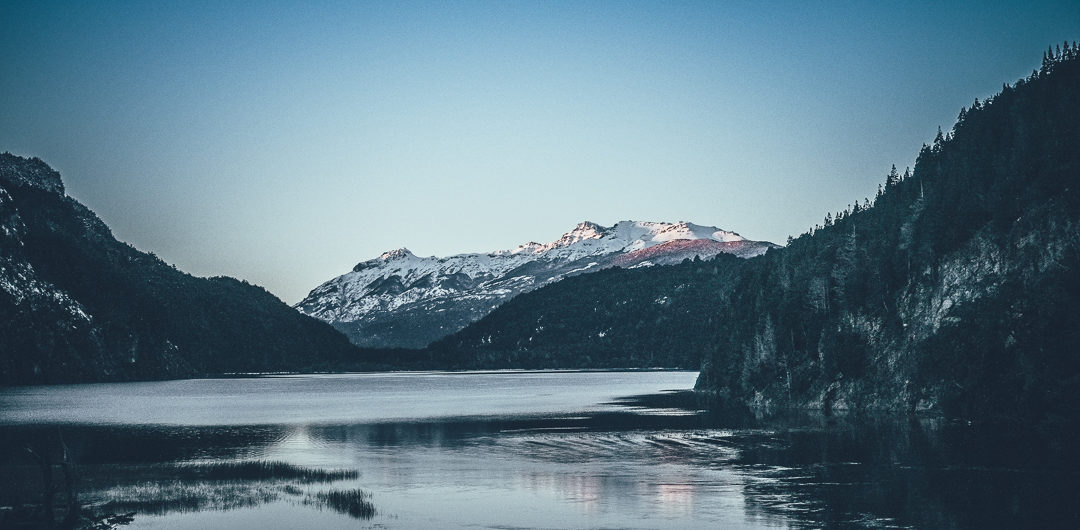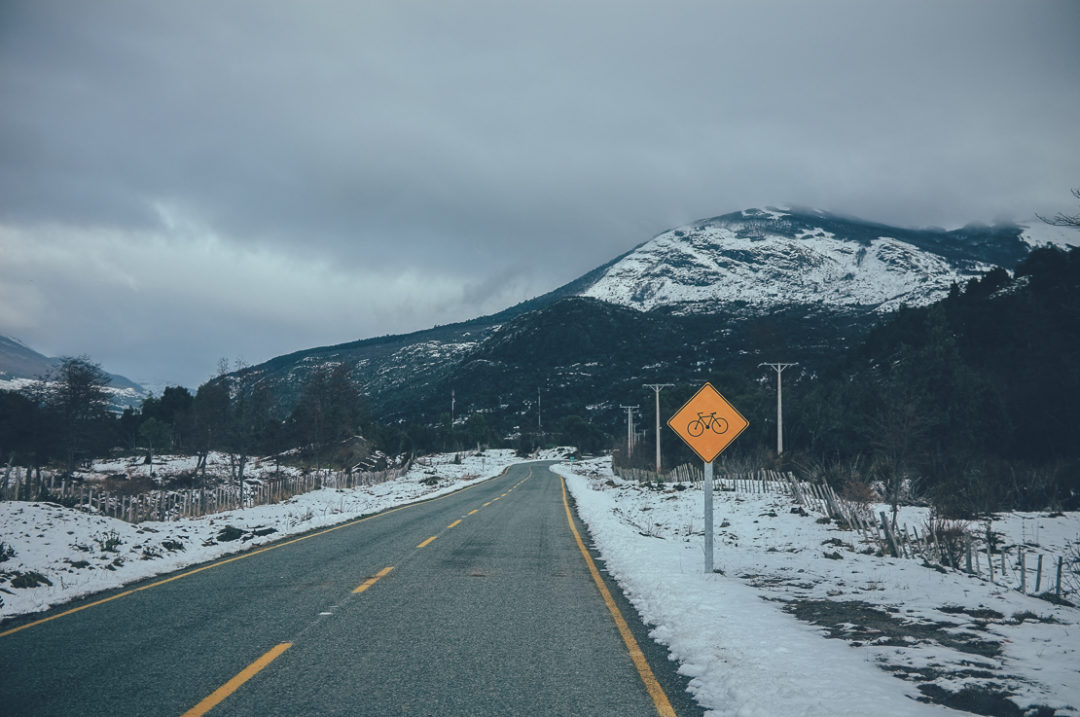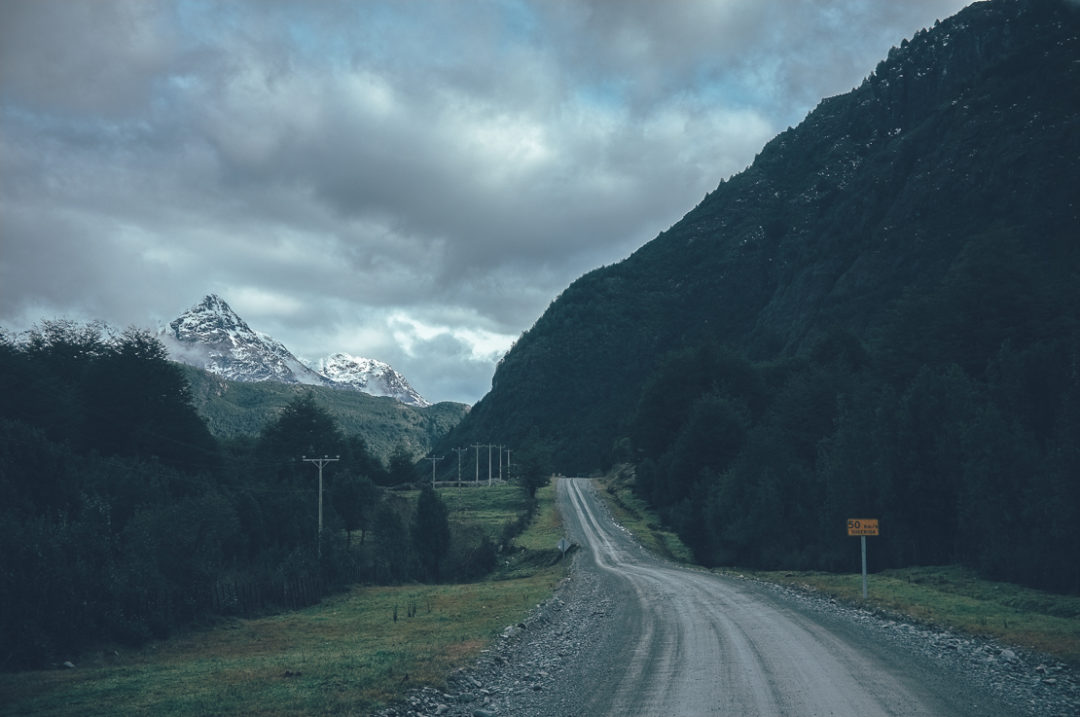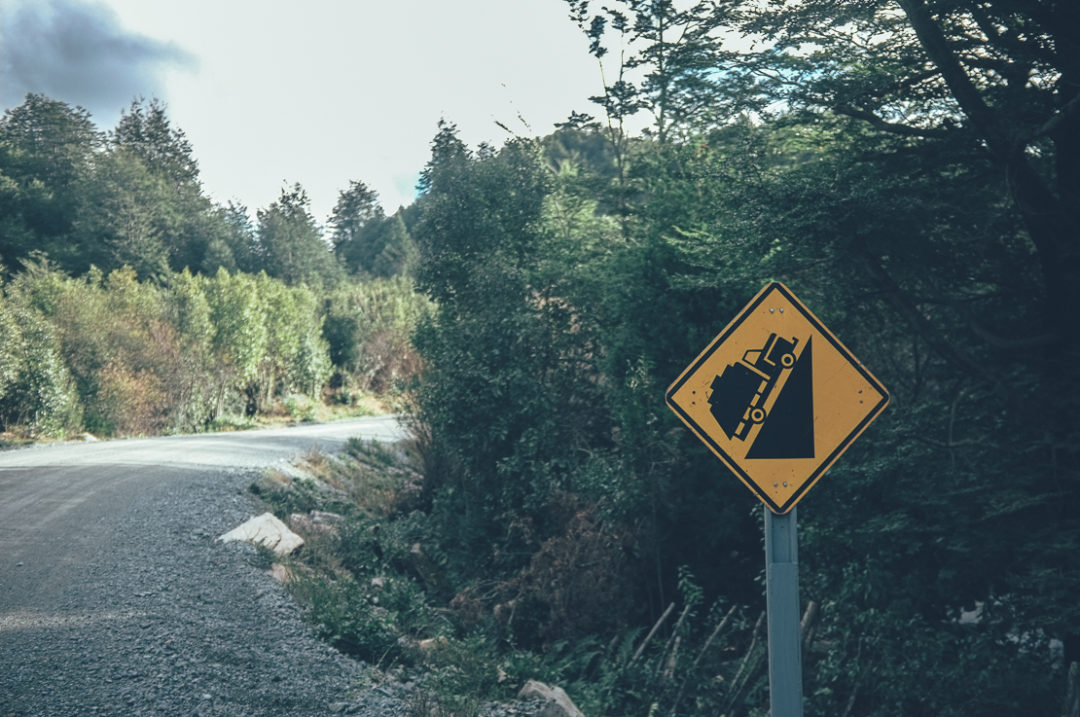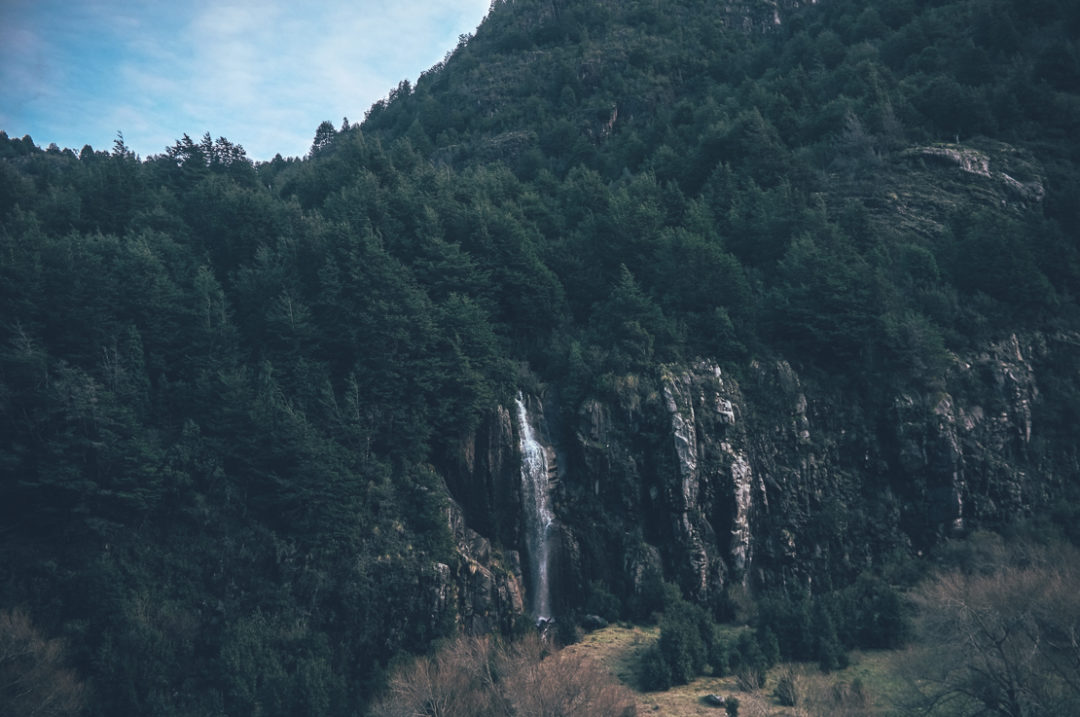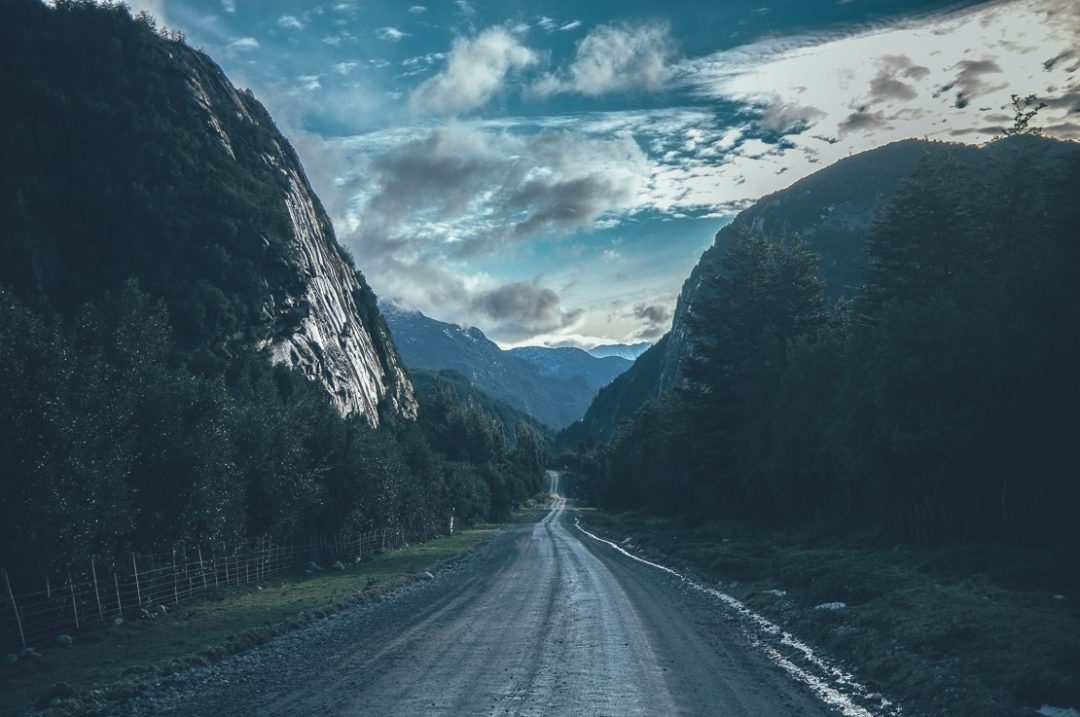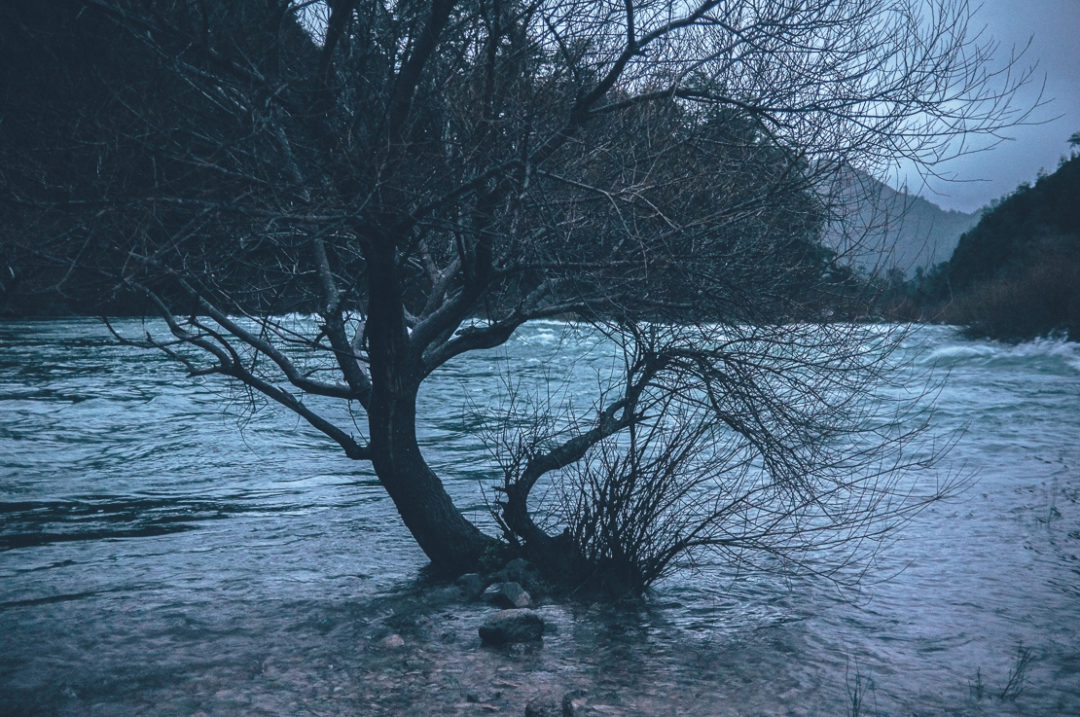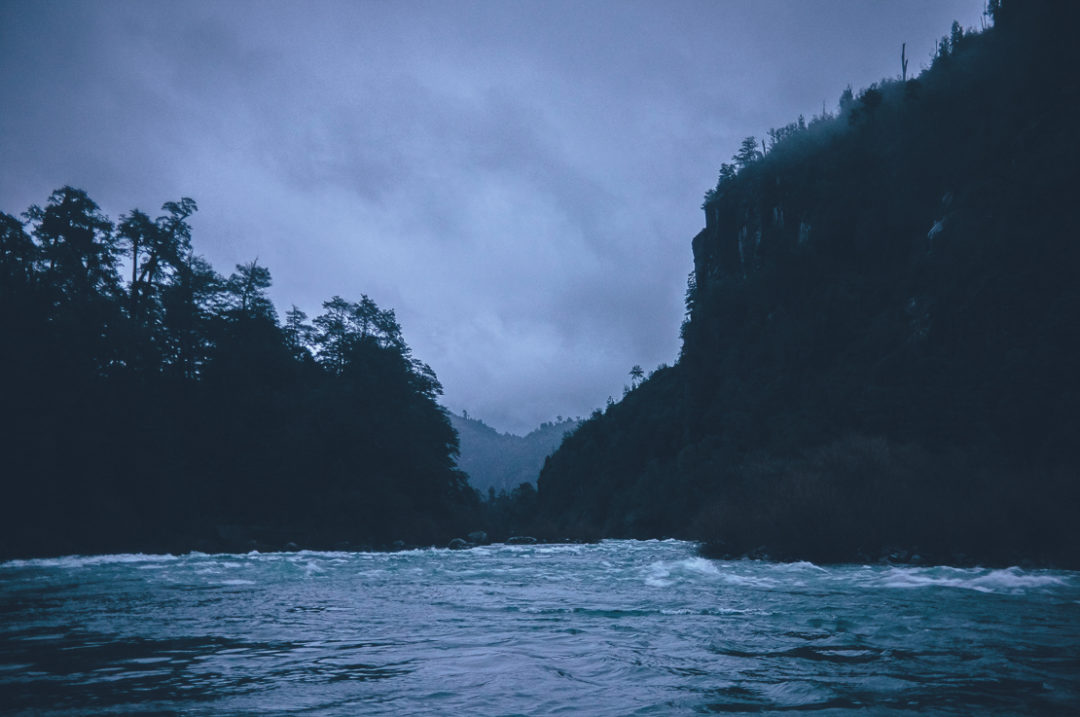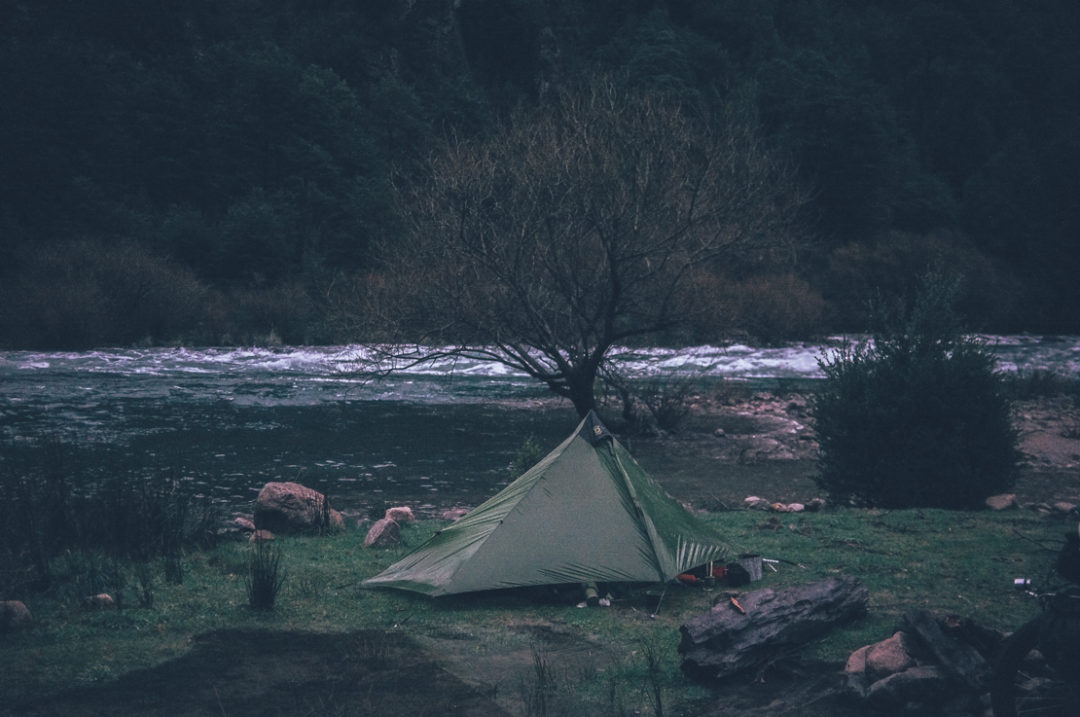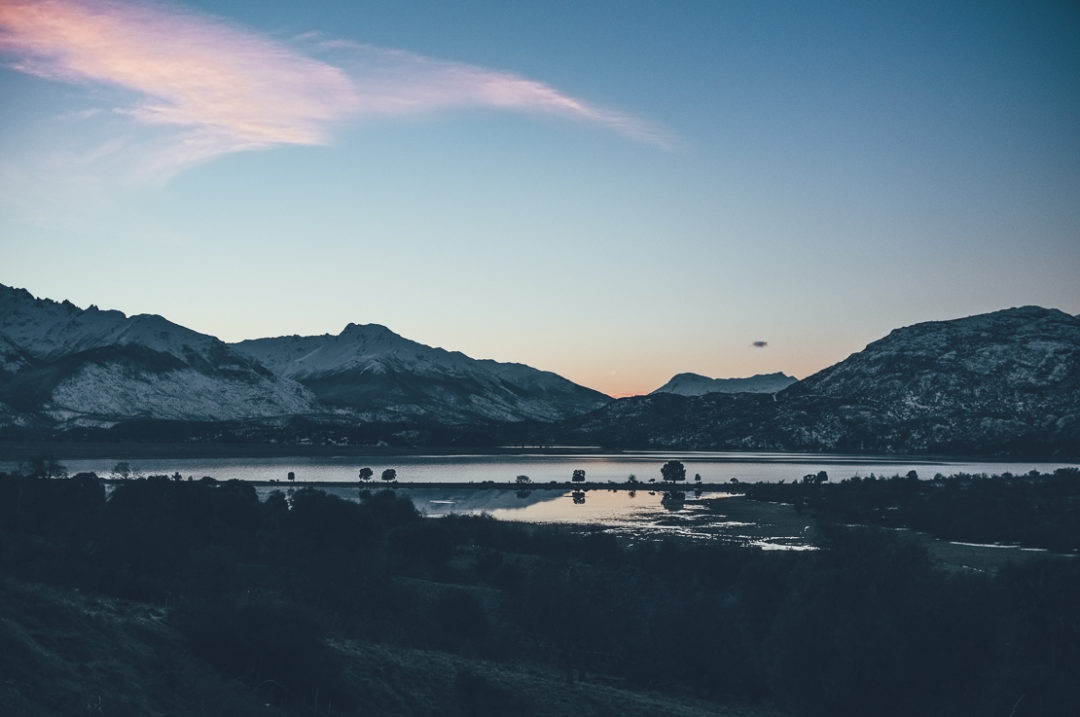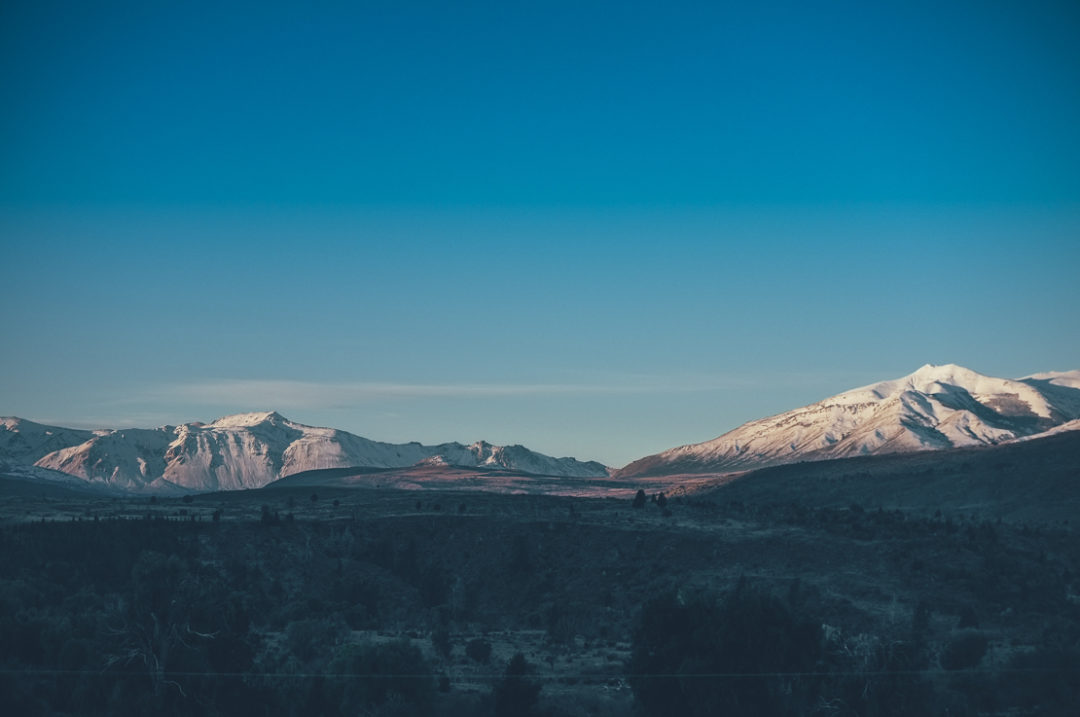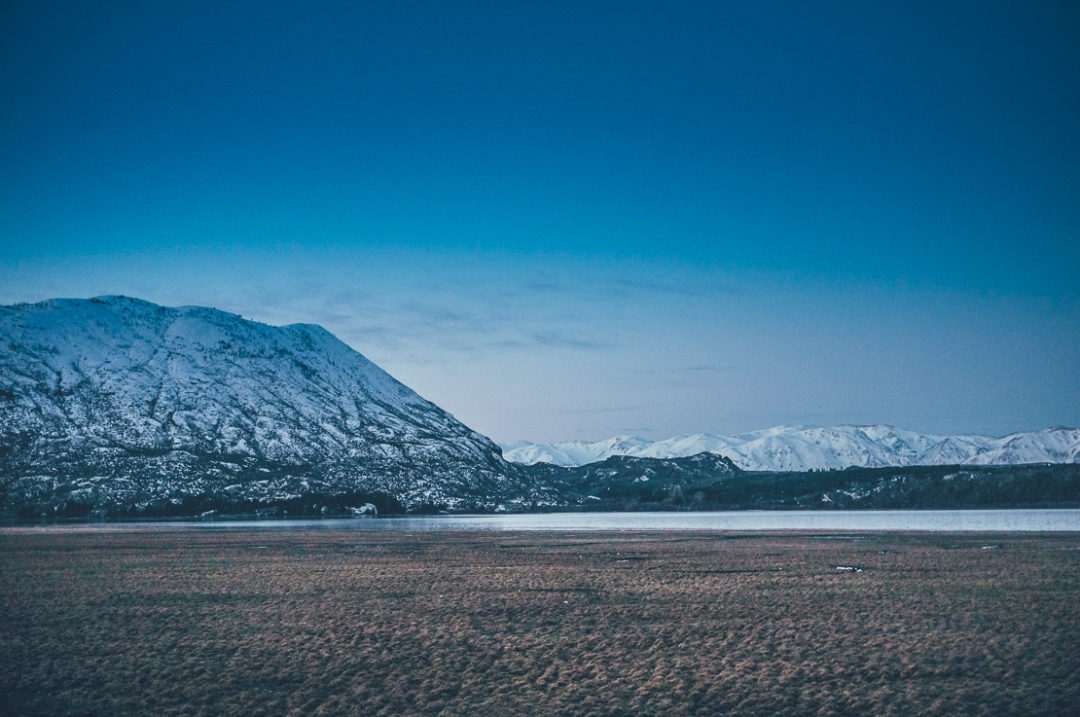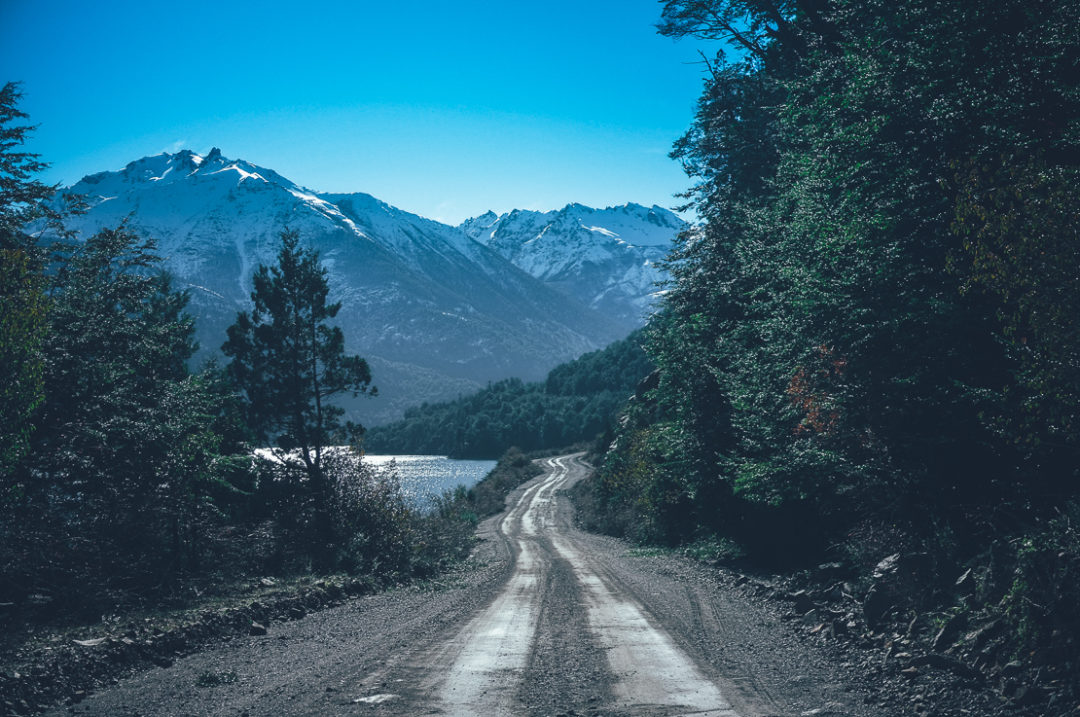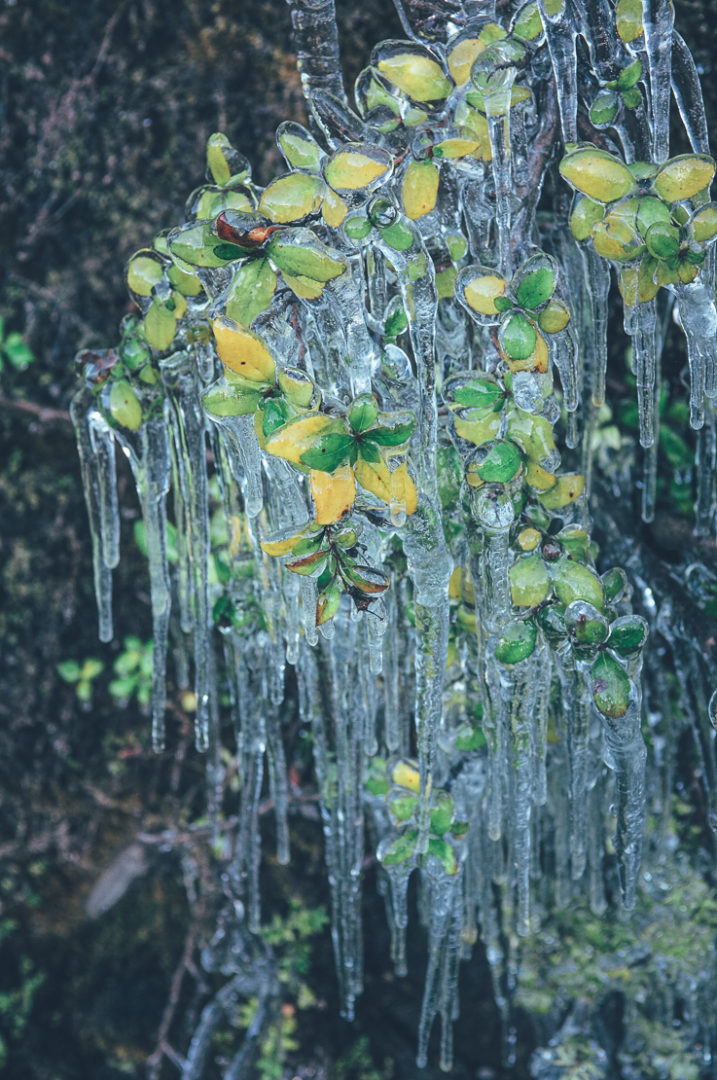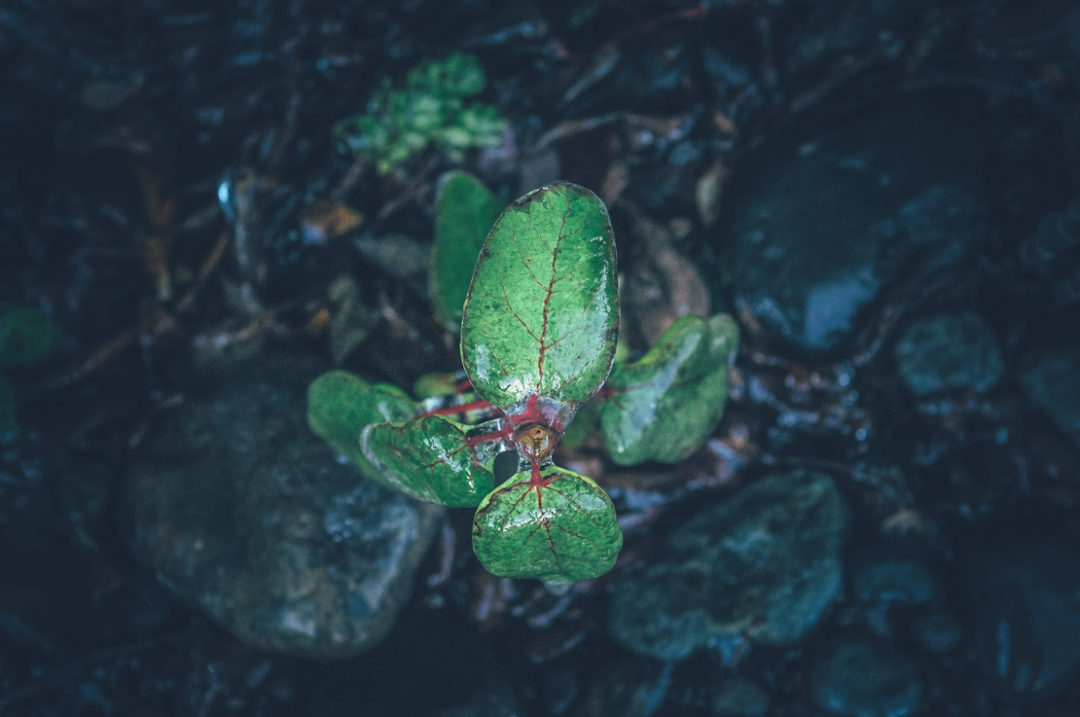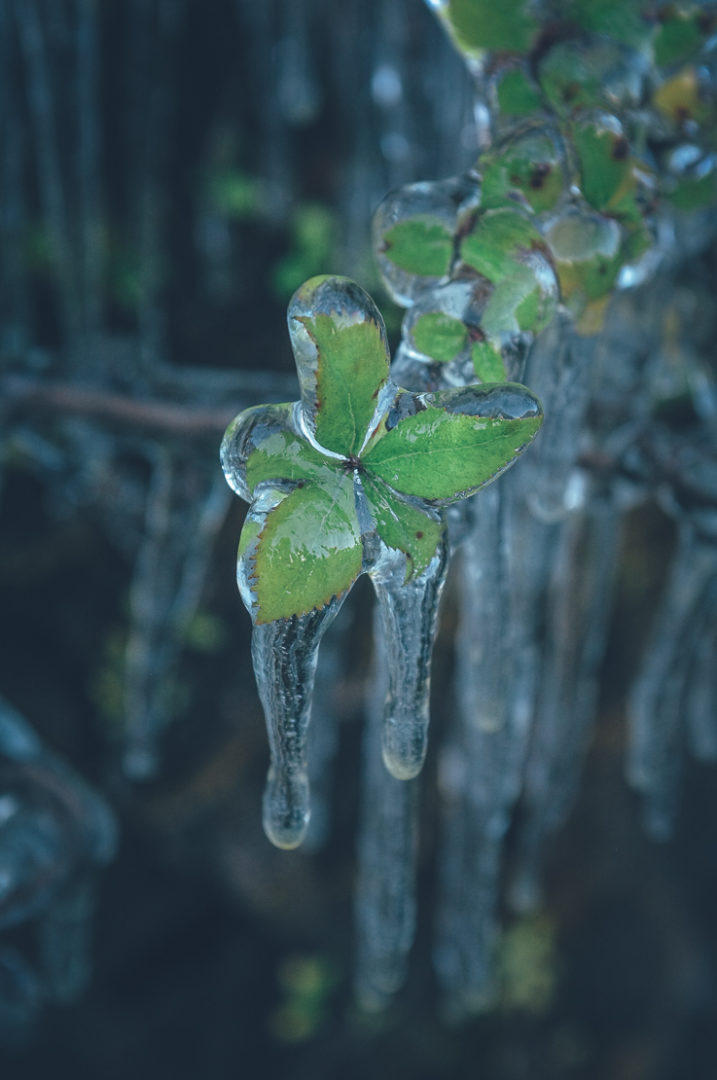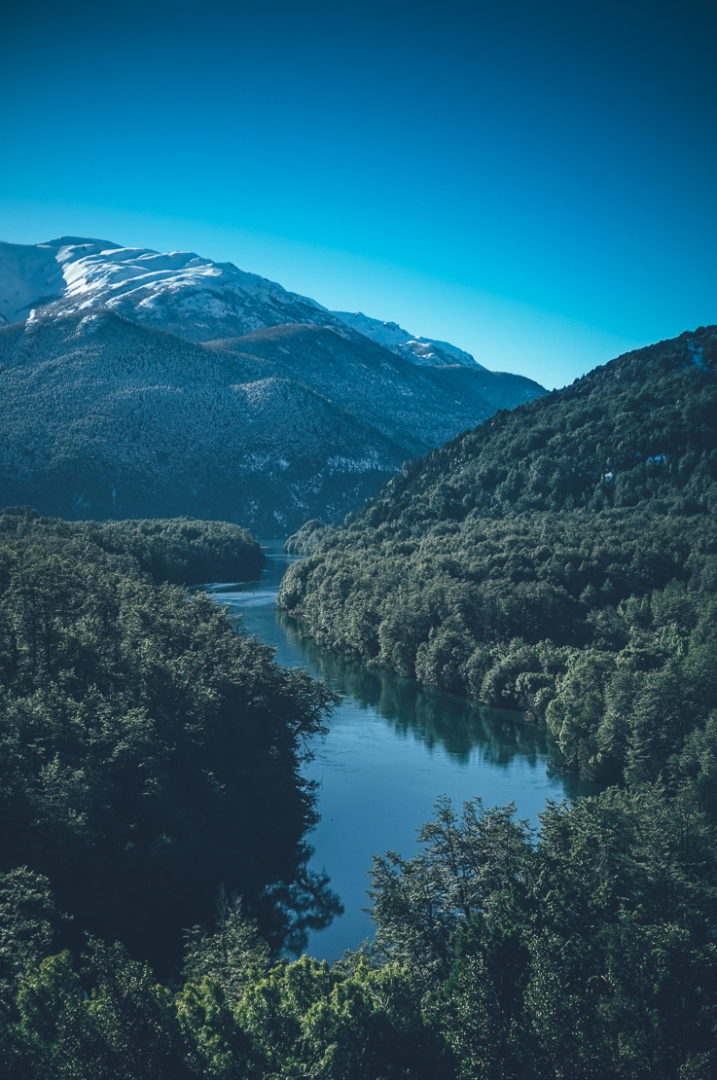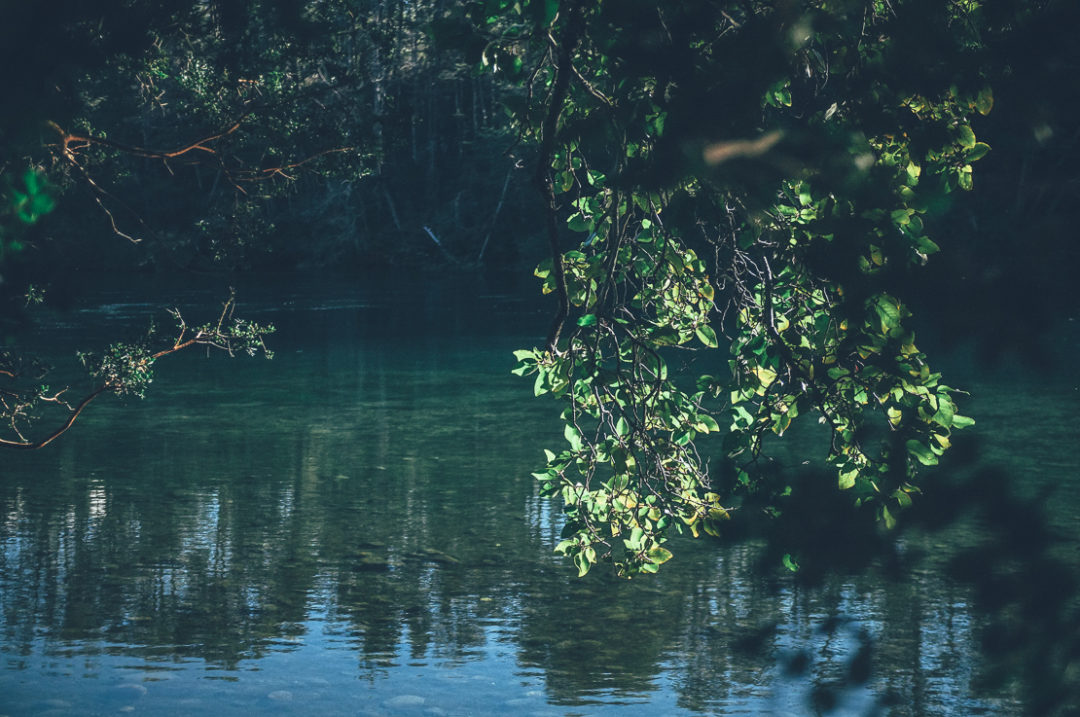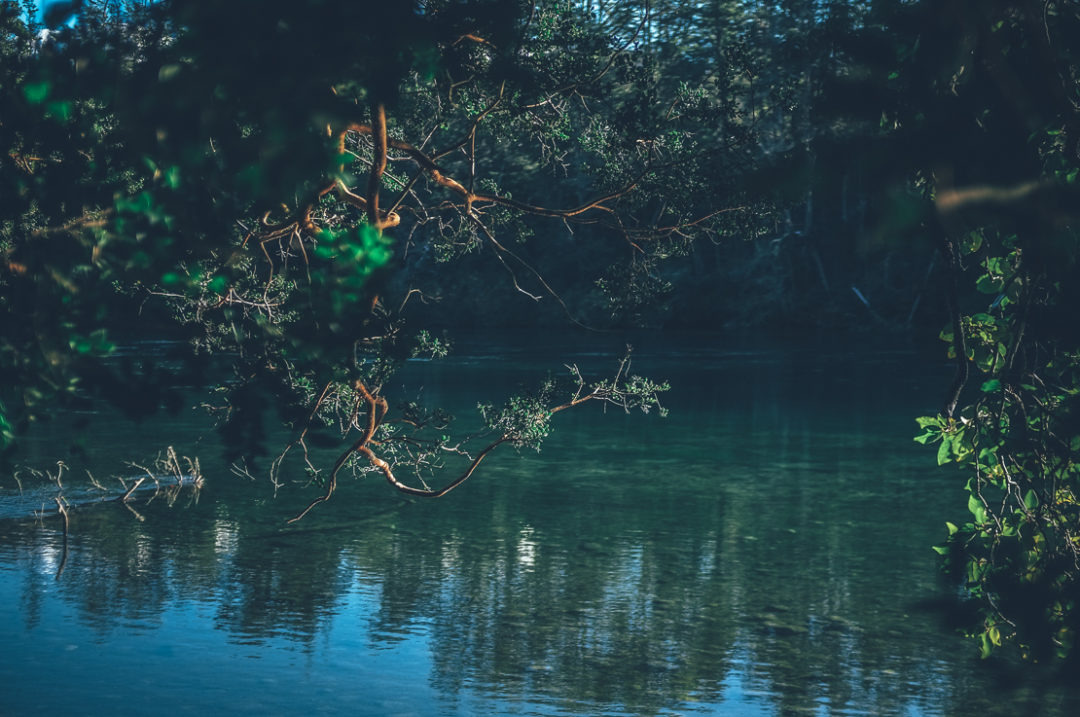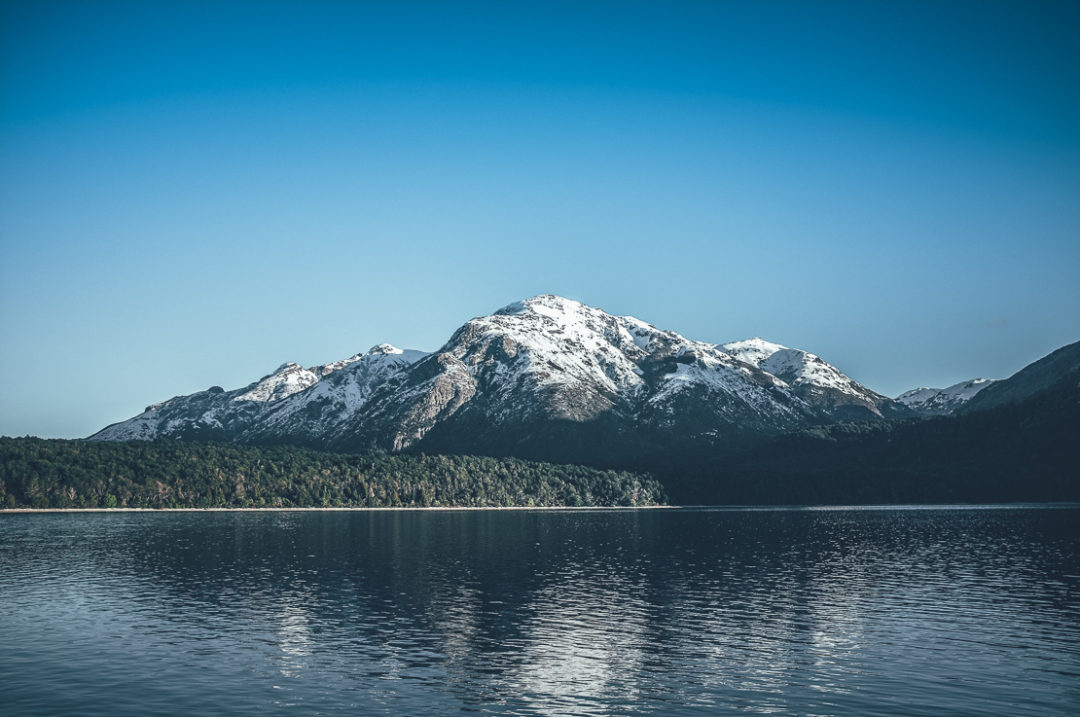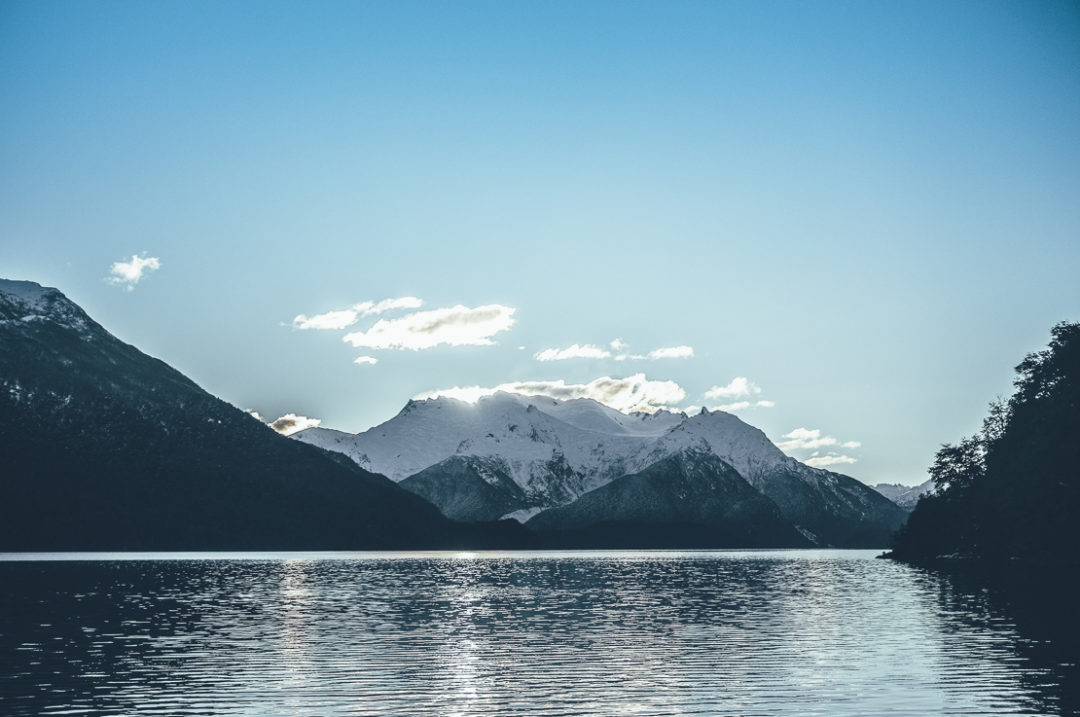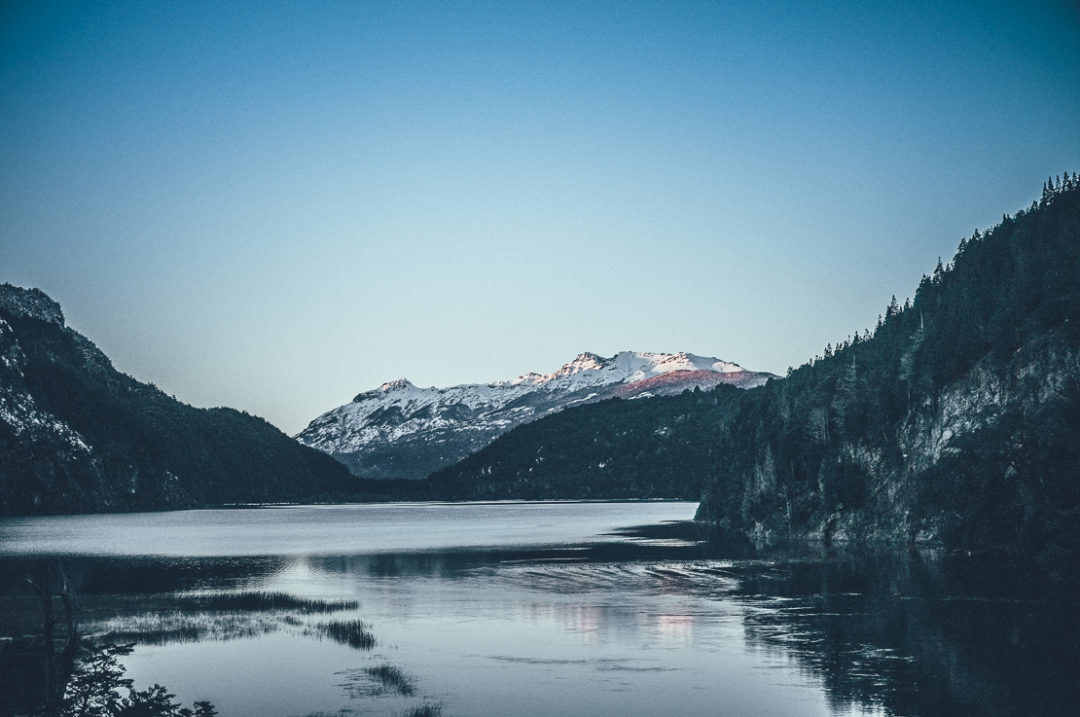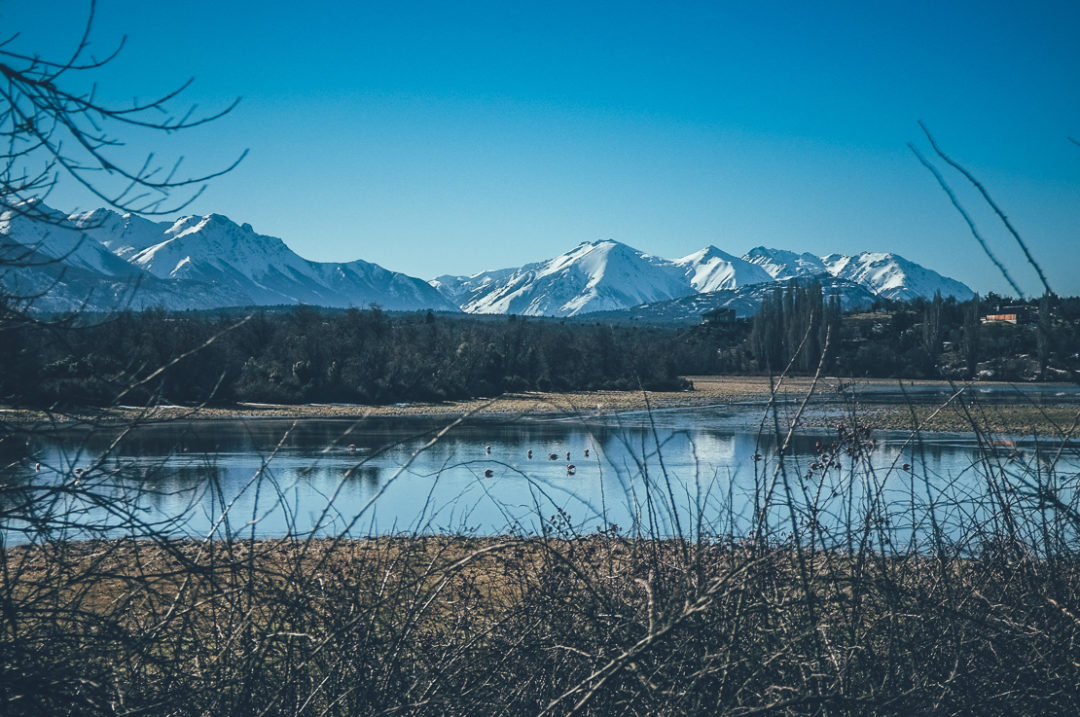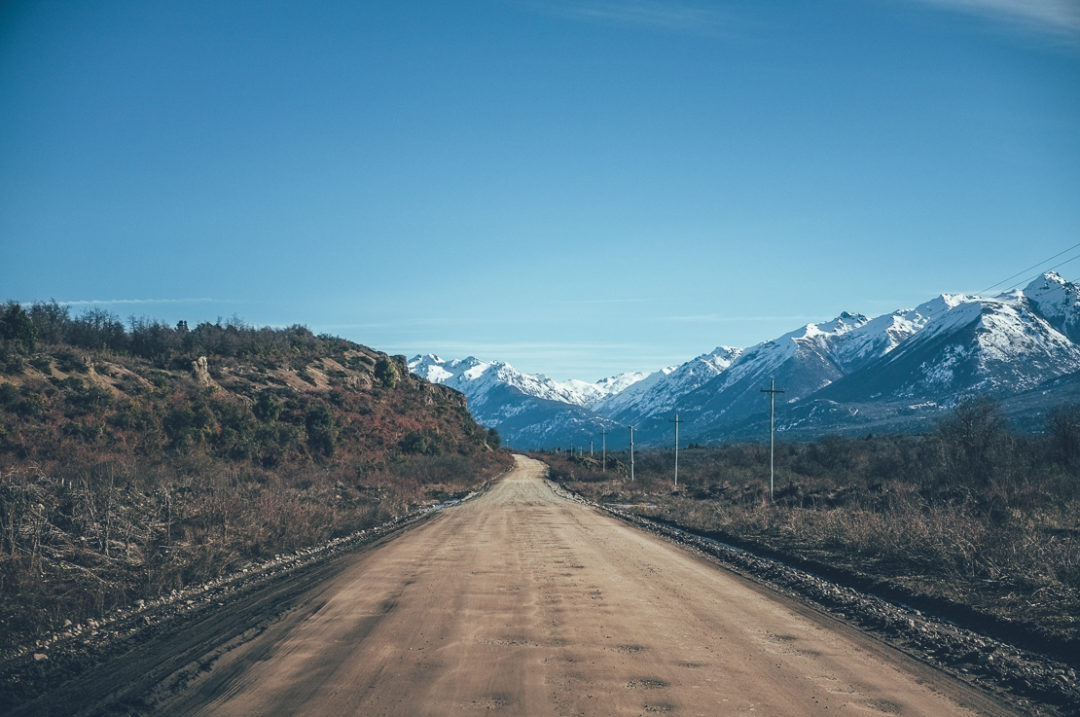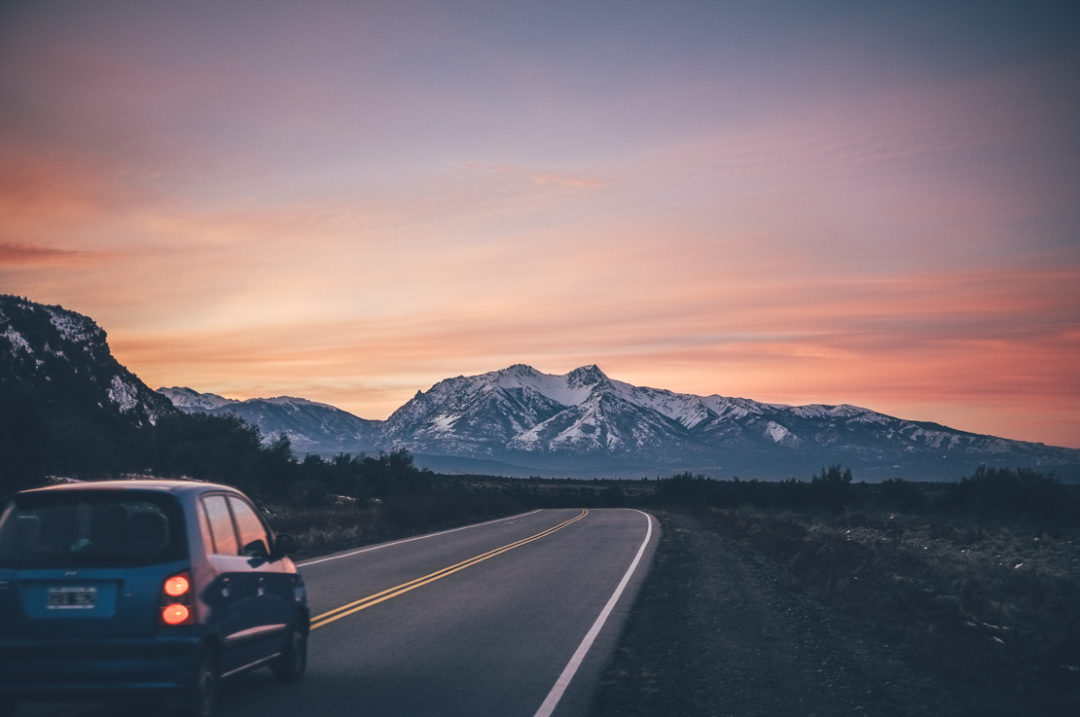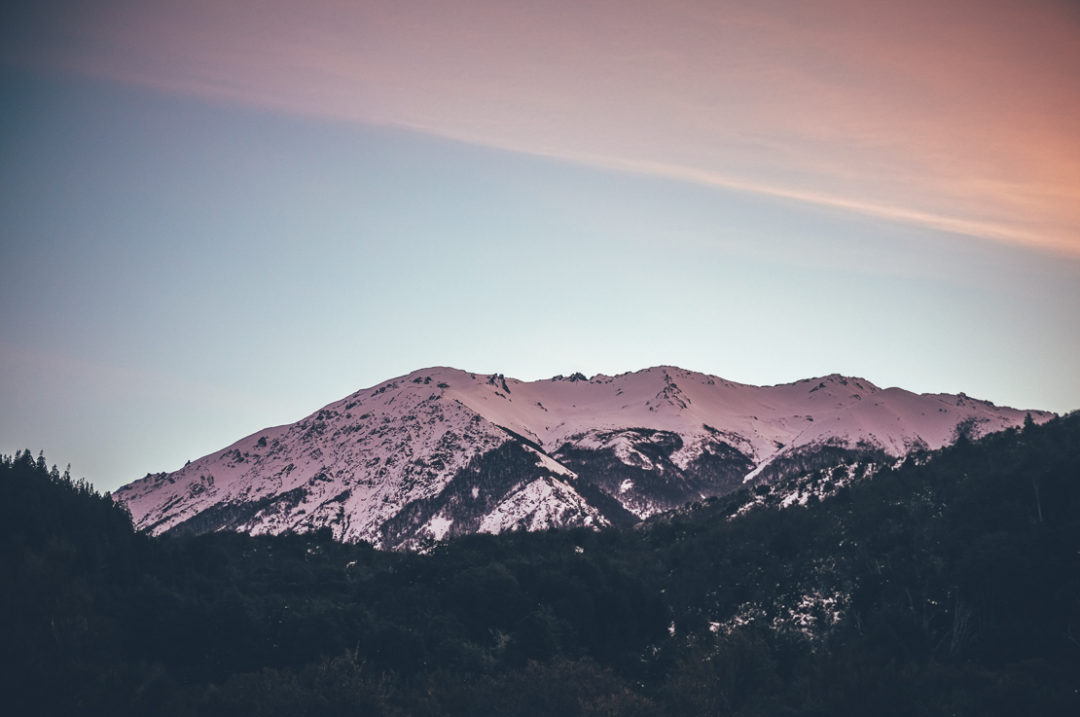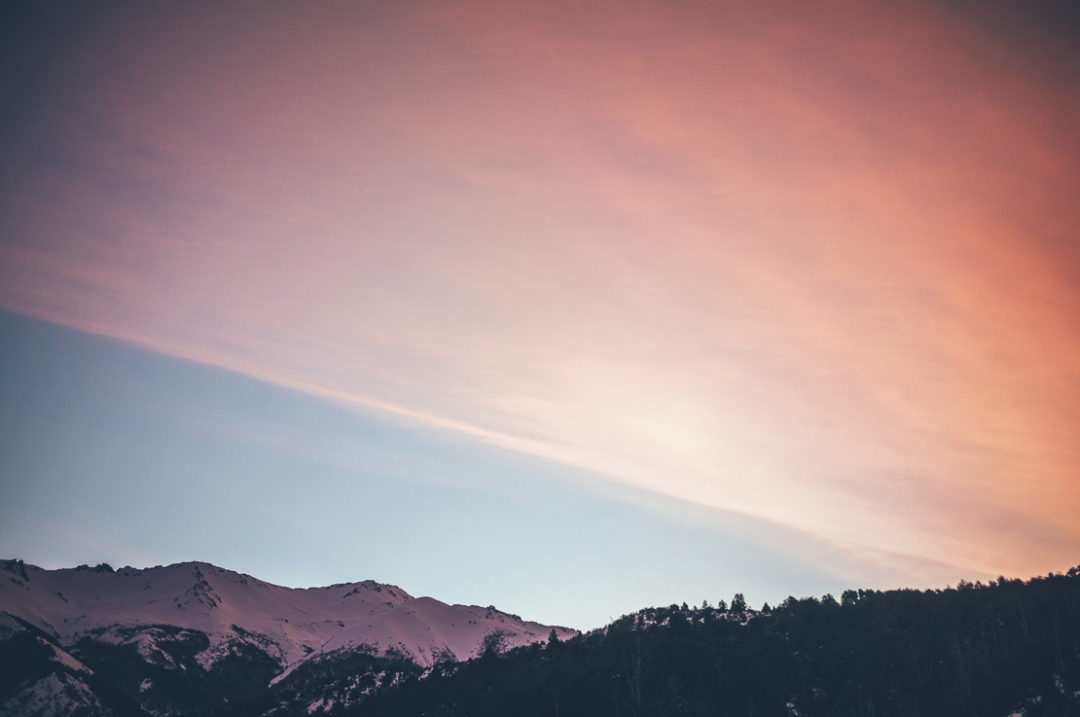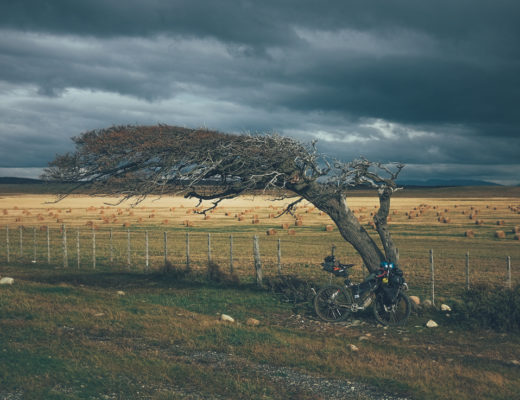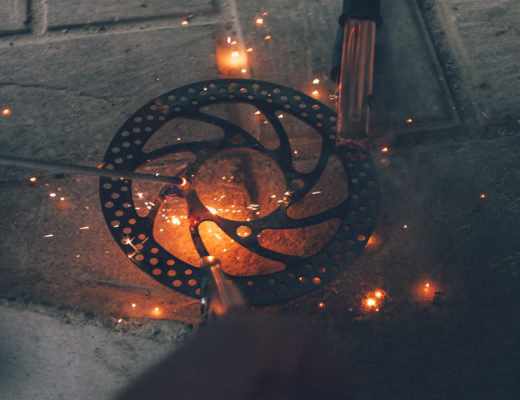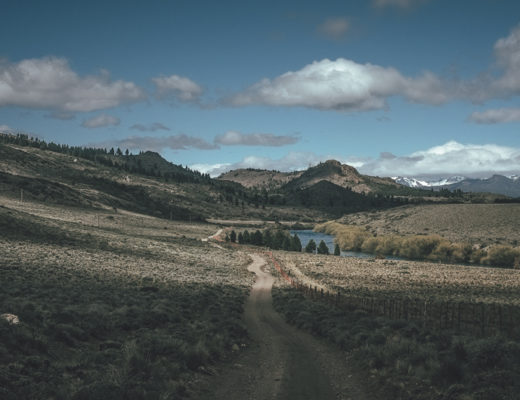On our over-populated planet it is usually necessary to get off the beaten path to get a glimpse of not-yet-destroyed beauty of nature. For me that has been one of the primary reasons to explore previously fairly unridden routes in Patagonia. Though my ride from Valle Corcovado to El Bolsón proves that sometimes the beaten path could be also the most beautiful. Sometimes there is a reason why a path has got beaten in the first place, I suppose…
A day after leaving RaúI and Elena, who had generously offered me a place to stay during a snowstorm, I crossed to Chile from Argentina at Carrenleufú. It took the Argentinian border officials the generous time of 20 seconds to complete the border formalities and wish me good luck on my way. A new all time record? I stopped in Palena, the first Chilean town, to stock up food for the following days and use the free wifi at the central square to catch up with my friends and family.
Welcome to Chile! This sign revealed that this route might have quite a flow of cyclists on high season.
Weather was relatively warm and the respiration came down from the sky in the form of water. Two kilometers out of town the sky opened up and I headed into a dense pine plantation to look for a spot to camp. After pitching my tent I opened a one litre carton of Gato Merlot I had bought from the town and made a big fire under one of the biggest pines. There sitting in the rain at campfire sipping wonderfully tasting cheap red wine I wondered where this life has taken me. As the bottom of the 1 litre wine box approached, the rain started to penetrate my jacket. The fire warmed my face, as did the wine, when I grilled salchichas and pancitos on the campfire.
The rain continued through the following day and I did not manage to come up with a good enough reason to get on the bike and not keep watching series on my phone. I was going to have to leave the comfort of my tent and sleeping bag once though. The rain was quickly eating out all the remaining snow, which was my best source of water. In the evening I gathered nearly all the snow I found and melt it for the next morning breakfast, coffee and drinking water. Two litres was half of what I wanted, but sufficient enough.
Chilean Central Patagonia always manages to surprise me. Snowy peaks, waterfalls, cliffs and forests are just magnificent.
The ride down from the border to the lower lands of Chile was spectacular, as usual. Deep faced green valleys, snowy peaks, crystal clear rivers and waterfalls. No wonder many cyclists take this way. After taking a crossroad back toward Argentina and the border town of Futaleufu, I found a wonderful campsite by the Rio Futaleufu and made a big fire using the plentiful driftwood on the river bank. I sat at campfire late till the night, until black shadows hid the stars and soon after heavy drops of water started to hammer my campsite.
I escaped into the cover of my tent, which I had conveniently located close to the campfire and just 5 meters from the river bank. Clear night, no rain, no risk of a flooding river. Right? I was tired, but the ever hardening sound of big drops of water hitting on my tent got my adrenaline pumping. I started to see my mistake, I was camping way too close the river bank. Compared to a free standing, heavier tent design, my tarp tent would be impossible to move all the gear inside. Getting the gear out would make it wet in seconds and a combination of soaking wet gear and sub zero temperatures was something I wanted to avoid. I packed all my electronics and other things, which should stay dry into a dry back, and other things into a another big bag, making the possible evacuation to higher grounds as quick as possible. During the following hour I got out from my tent every 10 minutes to check the water level. It was rising, but luckily slowly.
Using some pieces of wood I built a system to see from inside my tent if the water has reached a critical level and risk flooding my tent. If the first log would be move, the second log reaching my tent would move as well The indicator log of my flood warning system remained still during first hours of the rain so I gave myself a permission to get some sleep. Generously I let myself sleep 30 min between check ups of the water level. At sunrise, water was two meters from my tent and if the water had risen maybe 25 more centimeters, I would have been screwed.
A book example of where you should never pitch your tent. Fooled by clear skies I chose the most scenic spot, instead of camping on a higher ground further away.
It had rained heavily the whole night and the fact that the water had not reached my tent during the night made me more relaxed. The catch of the river could not be large, I thought, as the river level had not risen more during the first night. There was a pause in the rain and I walked abit in the area close to my camp with my camera. The river was full and the current strong. Soon the rain continued and cocooned in my tent again. I had still a little bit of food left so I could spend another night if it came down to it. And so I did.
The next morning it had been raining 60 hours, nearly non-stop. I had only a little bit of pasta and a couple of cookies left, which I ate all for breakfast. I had nearly 40 km left to Futaleufú, the next place to stock up food. Once the rain paused for a short while, I packed my damp stuff as quickly as I could and got on the bike. The road was soft and small creeks crossed it where the ditches were flooding. The small waterfalls on the road side had turned into bigger ones and I was sprayed of water when I rode by. This did not make much difference to my state, though, as I was starting to be as wet as a fish already anyway.
The nature on the 40 km climb to Futaleufu was maybe the greenest I had seen in South America yet. Everything was covered with a dark green layer of plants, many of them the type I had not seen before. Trees had thick trunks and their thick branches reached far. The nature was fantastic and I hoped it would not have rained so hard and that I had more food with me, so I could have taken my time and enjoy the rainforest around me.
The day of the week does not make a difference on a biketour, unless you are in a Catholic country. Once I finally reached Futaleufú I was informed that it was Sunday, which guaranteed that I could not find an open mercado to buy more provisions. Also the only ATM in town refused my card, which risked getting more provisions on the following day either. I was down to 2000 Chilean pesos, equivalent of 3 euros, as I had also failed to withdraw more cash in Palena a couple of days earlier and in all the towns in Argentina during the past three weeks.
I walked into a fancy looking restaurant and asked if they could make me something for 2000 pesos, if my card didn’t work. I had suspected my card had been blocked by VISA due to some security measures and was confident that it wouldn’t work. It didn’t and I was prepared a big sandwich with a thick slice of beef, onion, slice of tomato and mayonesa. I sat as close the open fireplace as I could and relished my evening lunch. I thanked the kitchen staff and waiter multiple times and got into the dark and wet night looking for a campsite. The in season touristy town was full of hospedajes, but they were out of my budget with a factor of 10. One of the buildings of local Rodeo stage was open and I rolled my mattress on the dry, but dusty floor of a rodeo drinking hole.
In the morning I managed to call to my bank in Finland using the wifi of the village plaza and found out, that I had typed the PIN code wrong a couple of times a few weeks back. No wander my card didn’t work! I have a crappy photographic memory and I had pressed the right numbers, but in the wrong order. Videographic memory could be more useful. I got more cash and stocked up my frame bag with pasta and cookies and filled up my petrol stove bottle. From Futaleufú the route to Argentina was downhilll and I enjoyed the fast progress so much that I nearly missed the Argentinian border post on the side of the gravel road. The Gendarmeria building did not seem to have any activity going on and I thought it was just another abandoned military building. I stopped by the house anyway and after some consideration went to check if there was someone inside. There were and I found out that this was the house I would get my passport stamped to officially enter Argentina! I smiled to myself and handed over my passport. ‘Listo’, the border official soon told me. I was ready to step into Argentina fifth time in South America.
My lovely hosts in Corcovado, Raúl and Elena had a daughter in Trevellin, who would host me a couple of days. Though she would have to cancel and soon I got a message from Raul: Taneli, you can stay at our home in Trevellin while it rains. Heating, hot water, internet, how does it sound? Even though I had been just a week camping again, it was pleasant to enjoy the luxuries of indoor life. It was also nice to see Elena and Raul again, who were visiting the town from their mountain house to run some errands and see their grandkids. I relaxed four days with them, doing some writing, watched some movies and drank an ale or two in the evenings.
Elena had told me that the Parque Nacional de Los Alerces, where my route would take me, has the most beautiful nature she has ever seen. People often glorify the beauty accessible and close to them and I did not put my hopes high when I rode into the park. Alerce is a extremely slow growing and long life tree and there were, I had read, more old alerces in the park than anywhere else in the world. Up in the cordillera would be some of the oldest living ecosystems on the planet, some parts of the alerce forest would be way over thousand years old. Those parts of the park would be strictly protected and not even park rangers are allowed to visit that part of the national park. In the parts of the park accessible to tourists there would be just one alerce and that one was only 300 years old. I renamed the park as ‘Parque Nacional de el Alerce’ in my mind on a long uphill toward the park.
Approaching the Parque Nacional de los Alerces.
Patagonian nature is outstanding, which has drawn more and more tourists from all over the world into the region to spend their holidays. Nobody visits the Patagonia in the winter though apart from the skiing destinations. Winter riding in close to zero temperatures can be wet and miserable sometimes, but the reward is that you can experience some of the most magnificent natural beauties of our overpopulated planet alone. At the gate of the national park I stopped and took out imaginary money from my wallet and handed it to an imaginary park entrance cashier, who wished me a good ride across the park. Another benefit of season touring: free entrances to usually expensive attractions. I coasted down to a official camping site of Villa Futalaufquen, chose the best camping spot in the area and made a big fire with the hundreds of fallen branches the snow had broken during the past weeks. While cooking at campfire in light snowfall I felt lucky to end up in this part of the world in mid winter.
In the morning the previously soft dirt road was frozen and if I closed my eyes I could imagine that I was riding on pavement. The forest was old and Lago Futaleufquen deep green with a hint of celeste. I stopped for a lunch at a beach I had been tipped off to have a lot of trout close to shore line. While cooking pasta and a cup of coffee, I saw a school of trout swimming along the lakeside eating insects from the surface every now and then. I rigged my fly fishing rod and tried my arsenal of fly fishing techniques to have a closer look at these natives, but with no luck. This is why I fish, I thought. It is impossible to know why a fish takes a fly or why it does not. Every time I think I have learned something new and concrete, I am soon proved otherwise. Fishing is the hardest thing I have done in my life and that is why I love it.
The road across the park was following the lakeside, sometimes climbing 200 meters to a mountain face, before descending back to the green lake again. At 500 meters there was not much snow at all, but at over 700 meters the scenery was mostly white and the road icy. The traffic was completely non existent. An ateljé of natural glass sculptures on the road side stopped me for an half an hour and I continued only when I could not feel my toes anymore and had to warm my self up again by riding my bike.
The road across the Parque Nacional de Los Alerces was a treat with no traffic at all.
An exhibition of sculptures of ice covered plants stopped me for half an hour in the Parque Nacional de Los Alerces.
Elena had marked some of the must-see spots in the park on my map. One of them was Rio Arrayanes. I have seen hundreds, if not thousands rivers during the past years. How special could a river be? Thick green forest reached its tentacles on the glass like light blue and greenish water and you could see where a trout had surfaced by ever growing circles on the mirror like surface. I was speechless (figuratively speaking as being alone I do not talk much anyway). I took a trail down to the river from the road and just watched the water under the canopy of the green forest. This was magic.
Rio Arrayanes could be the most beautiful river I have ever seen. It also had more trout than I have ever seen before. Have you ever seen over 100 spooning full grown trout at the same time?
I continued to Pasarela de Rio Arrayanes, a walking bridge across the river. My heart started to beat, I got goosepumps and my face blushed red. From the bridge I could see more than 100 full grown trouts swimming in small schools or pairs. There were fish in the 30 meter wide river as far as I could see before the river floor turned into a reflection of the snowy mountains. I did not know that places like existed anymore. How has the nature survived this far in the Age of Men, where a spot like this is usually harvested empty as soon as it’s found? Elena had been right. This was possibly the most beautiful nature there is.
I walked around the headland on a trail, which in the summer probably swearms of people. Everywhere I looked, the beauty of nature was astounding. Spectacular deep blue and green lake, dense old-growth forest, a gin clear river full of trout, snow and glacier covered mountain tops. I thought I had seen it all when walking back to my bike from the river bank, but this magical place put one more spell on me. The high pitch sound I have got familiar with in southern and central Patagonia reminded me that I was in still in the land of pumas.
Lago Menéndez and Rio Arrayanes. The pictures do not do justice how the nature is like there.
On the way out from the park I saw flamingos in Villa Lago Rivadavia on a flooding field, the first time after Tierra del Fuego. A one meter high pink and white bird walking in a middle of lake is always a peculiar sight. Bright pink is not exactly a colour of camouflage in the Patagonia, but like for all the animals (two, four or eight legged) my species was probably their biggest enemy anyway. The pink on the reflection of light blue mountains looked fantastic and I hoped of having a longer lens to capture better what I was seeing.
The road out from the Parque Nacional de Los Alerces offered great traffic free cycling. Flamingos on a rain water pond at the Villa Lago Rivadavia were the first one I saw since Tierra del Fuego.
Soon the less used traffic road joined the Ruta 40, which would take me to the hippie town of El Bolsón, where I would meet Brazilian cyclist Freitas whom I had met in Tierra del Fuego early 2017 and have a week off of the bike. I was looking forward to seeing him and did not want to spend more time on the Ruta 40 than I necessarily had to. Therefore I filled my tummy with cookies, put on an audiobook of Biography of Elon Musk and hit the cranks. 5 hours and 75 km later in the dark I reached an old wooden house on the side of the El Bolson, which would be my home away from home longer that I knew at the time.
On a highway to El Bolsón.
The Route
The route from Corcovado to El Bolsón is mostly hard packed gravel and easy riding in dry conditions. You could easily ride it with slick 2 inch tires. In the winter and wet conditions though the route can get soft, which slows down the daily progress. The last around 75 km to El Bolsón from the Parque Nacional de Los Alerces is on the busy Ruta 40 unfortunately, but there are not many alternative routes of getting into town.

